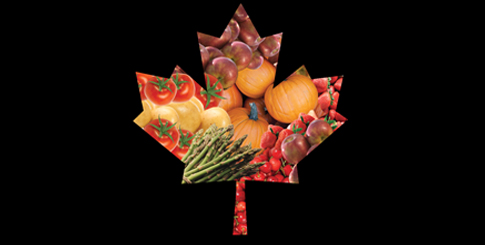Challenges du Jour
A common and enduring challenge among Quebec’s suppliers is availability. One factor, according to Mayrand, is the shrinking number of growers both in and outside the province. “Consolidation on the farming end,” he shares, “is restricting access to certain products.”
To combat this challenge Pitsikoulis finds that creative sourcing “has opened Canadawide up to suppliers pretty much anywhere in the world.” This does come with some caveats, however, including supply and seasonal need coinciding: “logistics have to be practical, and shippers must adhere to our packaging and safety requirements.”
Other issues suppliers contended with this year included pests and disease and food safety concerns. The apple fire blight encouraged by last year’s hot, humid spring affected approximately 80 to 100 orchards in the Laurentians region. The blight left trees leafless, shriveled, and brown or black in color. Unfortunately, the only way to combat the blight is to remove all infected branches. In some areas, young trees were particularly hard hit, with the potential to affect supply problems in the future.
On the retail side, there were two significant outbreaks: listeria related to packaged salad mixes and a Cyclospora outbreak across four provinces, including Quebec, likely linked to imported foods from tropical regions.
Production
Nationally, Quebec accounted for 40 percent of total vegetable value in Canada, and expected to bring in over $2.5 billion in total crop receipts for 2016, a slight increase from 2015 according to Agriculture and Agri-Food Canada.
Among the vegetable crops showing gains were radishes, carrots, beets, leeks, and green onions, while lettuce, broccoli, cauliflower, and melons also continue to sell well. When it comes to fruit, apples, cranberries, and blueberries continue to dominate Quebec production, with strawberries, grapes, raspberries, and pears rounding out the top fruits produced in the province.
Greenhouse production continues to expand in the region, with tomatoes, peppers, lettuce, and cucumbers as the usual fare. Mayrand is a major supporter when it comes to sourcing greenhouse product: “Always have, always will,” he says.
In a twist on protected agriculture, Quebec is experimenting with a rather unusual way to grow vegetables. A new project in the province deploys carbon capture technology at a pulp mill to power an adjacent greenhouse. The technology will be used in a new 34-hectare complex in the Lac-Saint-Jean region, which will become fully operational in 2019. As Quebec’s largest greenhouse, the $100 million project will produce year-round vegetables and contribute 400 jobs to the community. The success of this project could pave the way for a new wave of more efficient, green, and profitable greenhouses.
Macro trends such as the depreciation of the Canadian dollar and the low global crude oil prices have made Canadian agricultural exports particularly profitable internationally. As a result, farm income in Canada is expected to grow and possibly set a new record for the 2016 season.



